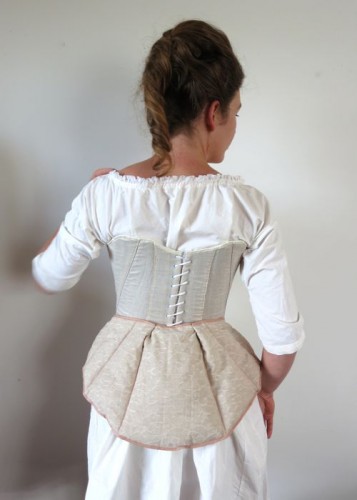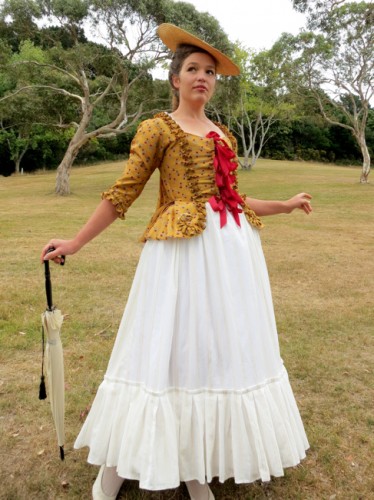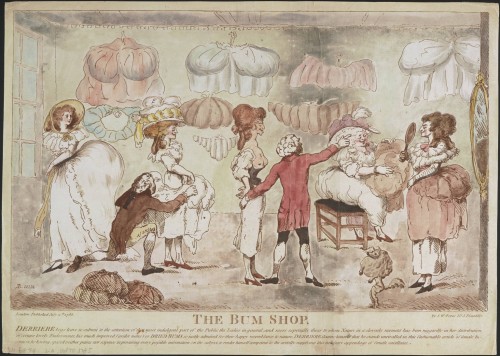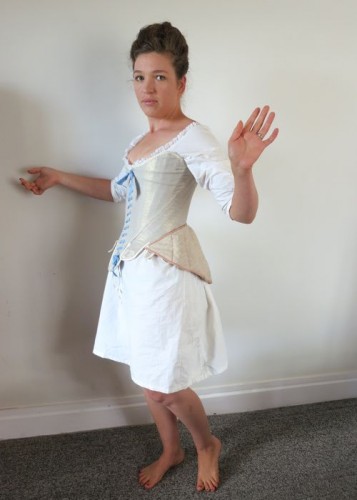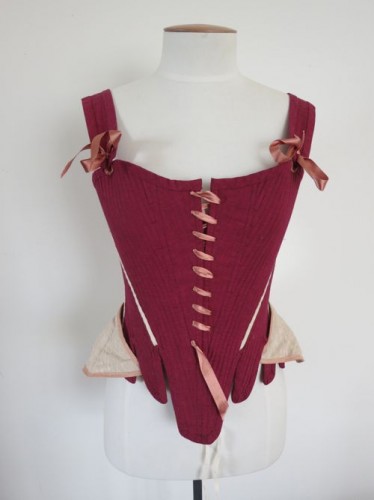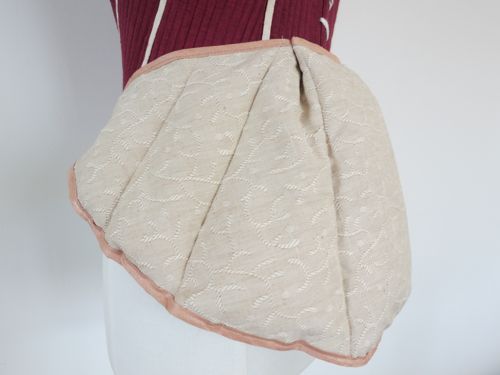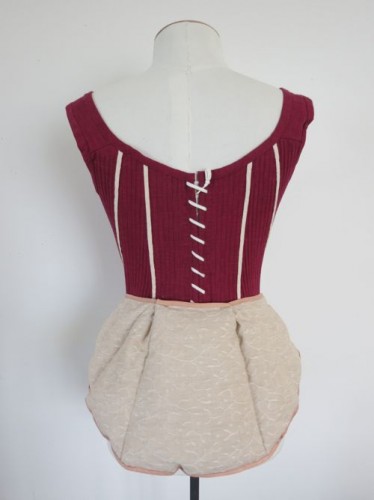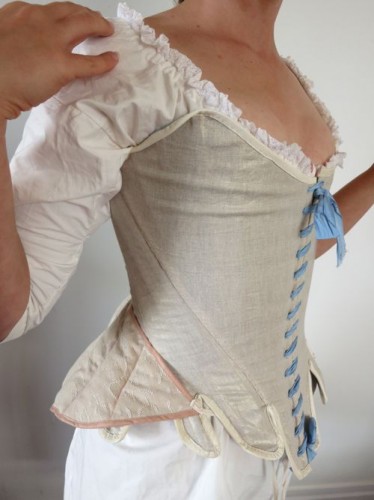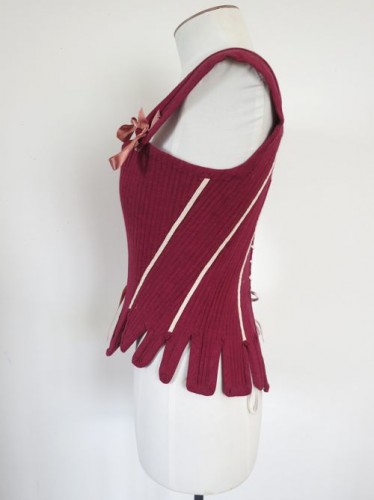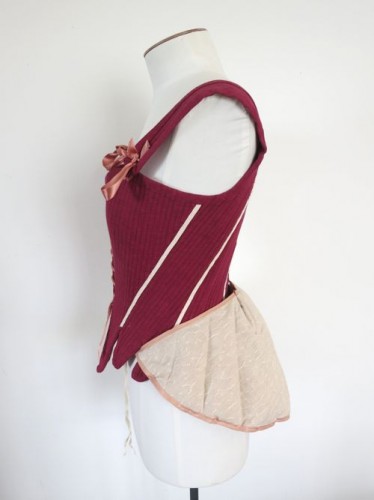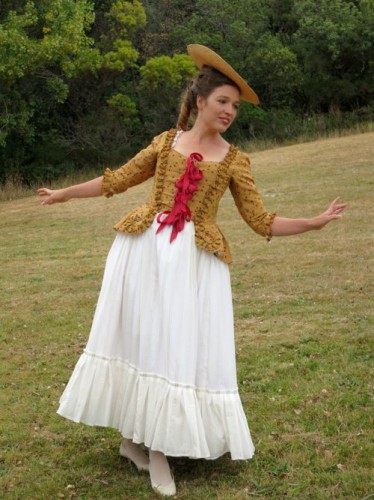I do hope everyone is planning something for the Historical Sew Fortnightly ‘By the Sea’ challenge! There are so many gorgeous, fantastic nautically inspired garments to choose from.
According to the challenge guidelines, you can make anything that would have been worn by or on the sea (or river or lake), from ancient Roman ‘resort’ wear to Cleopatras frocks for barging down the Nile, to warm wool and furs to keep exploring Vikings warm, to all the more traditional nautical looks.
My favourite seaside looks tend to be a bit more modern and traditional and nautical. Here are some that I love, and will get around to making…someday….
To start off, a Regency bathing costume may not be a very exciting garment in and of itself, but oh, what a fascinating scene it evokes!

‘Sea Bathing’ 1813 From “The costume of Yorkshire, illustrated by a series of forty engravings, being fac-similes of original drawings” NYPL Digital Collection
By the 1850s bathing costumes seemed to have developed into actual costumes: something a bit more defined than an all-enveloping shift. This 1850s costume is pretty all-enveloping, but the buttons and bobbles and sleeve trims all lend it a certain nautical jauntiness.

Bathing dress. Sept. 1858. Harper’s magazine, NYPL Digital Collection
It may not be the ancient Romans that I mentioned before, but how fascinating and fetching is this Greek key adorned classically-inspired bathing ensemble? Greek Keys were a very popular motif for bathing wear throughout the 19th century.

Bathing-dress ; Caps ; Shoes, etc. Aug.1870. From The Peterson magazine, NYPL Digital Collection
The reality, while still attractive in its own way, seems to have been less glamorous:
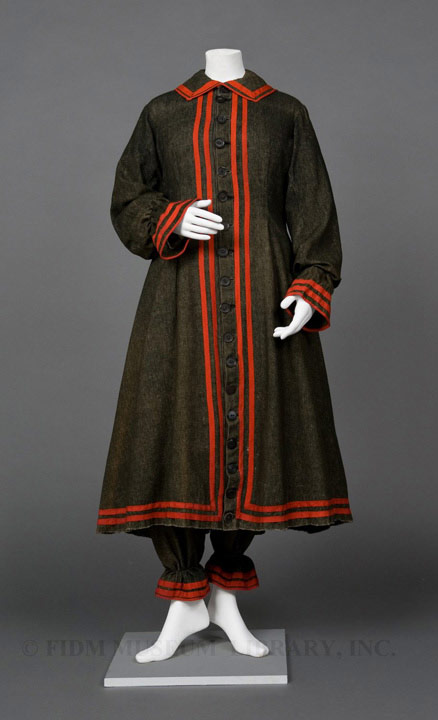
Bathing Ensemble, c. 1875, Wool, FIDM
If you couldn’t be glamourous in the sea, at least you could be perfectly put together by the sea. I love the crisp stripes on this bustle era seaside frock, especially with the darling matched parasol:
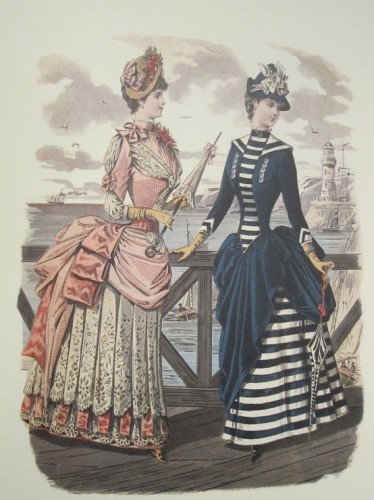
Fashions for the seaside, ca 1884
And as the perfect matching pair to it, a photograph of the ever-chic and stylish Princess Alexandra in a very similar ensemble:
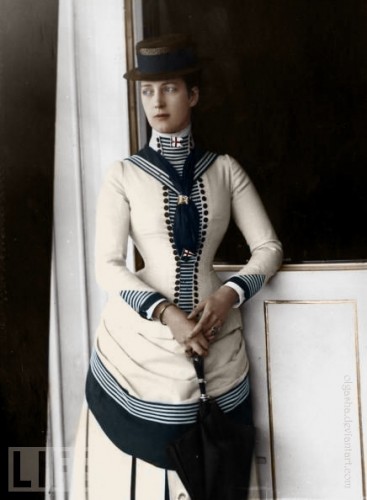
Princess Alexandra in a sailor suit, 1880s
As a reminder that not all nautical fashions need be blue and white, I love this 1903 take in red, pink and white. I’ve actually seen a lot of examples of sailors suits and nautical fashions from the 1860s to the 1960s in shades of pink. Such a lovely twist on the trope:

Summer frocks, 1903 Delineator
A slightly more unusual colour combination is green and white:
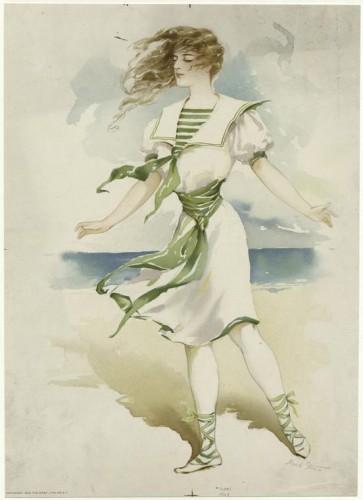
Woman on the beach, Maude Stumm, 1904 NYPL Digital Collection
And one in red and white:
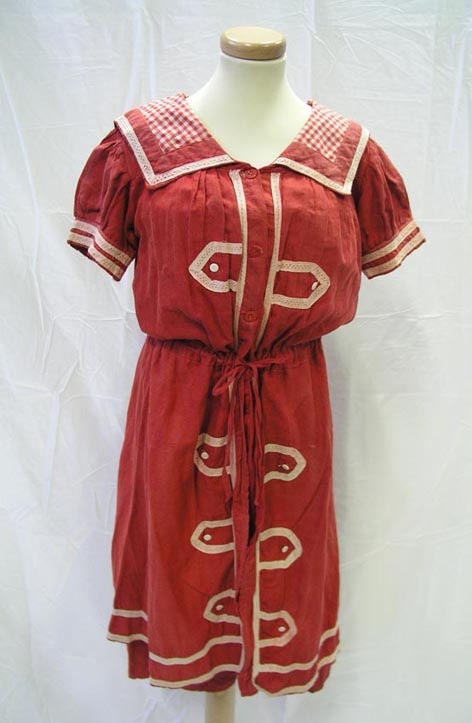
Bathing costume, ca. 1910
The 1930s were really when the beach and nautical fashions came into their own, starting with beach pyjamas in the late 1920s:
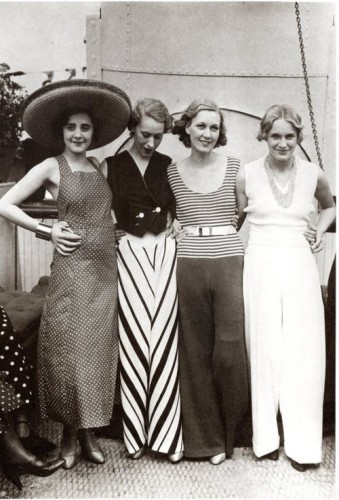
Beach pyjamas, ca 1930
And moving on to proper (albeit still woollen) knitted swimwear:

Swimwear 1934, via Wearing History
And encompassing every possible variant on the sailor suit, including, out of my own stash, the darling Butterick 5654:
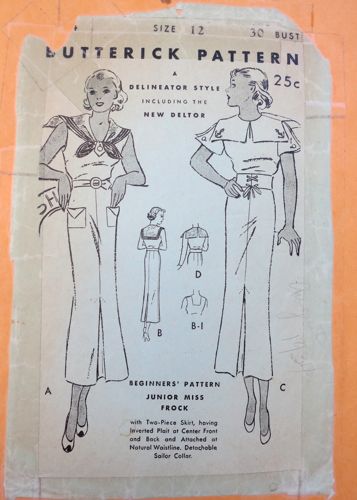
Butterick 5654, 1930s nautical inspired pattern
To finish it off, something fabulously bright: fish patterned coveralls by Jantzen. Now that’s how to do a one piece!
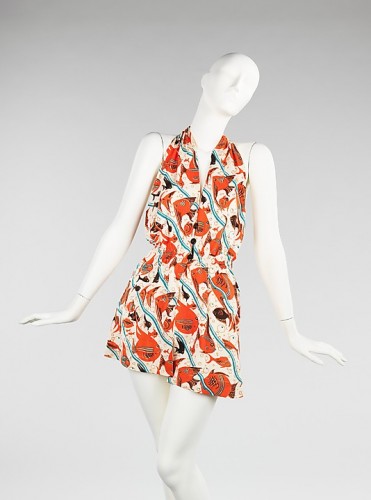
Beachette, Jantzen (American, founded 1910), 1938, silk, Metropolitan Museum of Art
What do you think? Do you long for olden days on the golden sands, or are you glad for the bitty bits of spandex we cover ourselves with these days?




